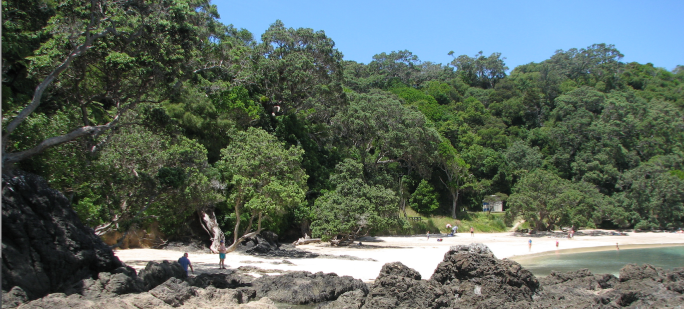Afforestation (#15) is one of the suite of Drawdown land use solutions. Others are:
- coastal wetlands #52
- forest protection #38
- indigenous people’s land management #39
- peatlands #13
- temperate forests #12
- tropical forests #5
- bamboo #35
- perennial biomass #51.
In the Northland context in addition to afforestation, the forest protection, temperate forests, and indigenous people’s land management are significant pathways to drawdown. The first three account for a potential 47.4 gigatons of reduced CO2 equivalent emissions.
As of 2014, 709 million acres of land were used for afforestation. Establishing timber plantations on an additional 204 million acres of marginal lands can sequester 18.1 gigatons of carbon dioxide by 2050. The use of marginal lands for afforestation also indirectly avoids deforestation that otherwise would be done in the conventional system. At a cost of $29 billion to implement, this additional area of timber plantations could produce a net profit for landowners of over $392 billion by 2050. (Drawdown)

The NRC website lists land use classes in Northland. The main classes are:
- pasture, 735,400 ha (52%)
- indigenous forest, 268,740 ha (19%)
- exotic forest, 187,550 ha (13%)
- mixed indigenous shrubland, 122,760 ha (9%)
- estuarine open water, 26,530 ha (2%)
- sand, gravel or rock, 14,594 ha (1%)
- mangrove, 12,820 ha (1%)
- other, 47,730 ha (3%)
One billion trees
The government’s ambition to plant 100 million trees a year for ten years gives Northland an opportunity to both sequester more carbon and reshape land use. Northland has roughly 5.1% of New Zealand’s land area, so that equates to about 5.1 million trees for Northland per year. At 4 metre centres that equates to about 2,040 hectares a year, 20,400 hectares over 10 years.
Where can we plant these trees? We already have 13% of our land covered in exotic forests (presumably mostly pines). If all of the additional plantings were pine, that would add another 10% to our exotic forests. Ideally some of these plantings will include regeneration of native forests and food trees such as avocados, macadamia, manuka, kanuka and banana. Fodder trees and farm forestry are options to diversify pasture. Thought must also be given to planting more trees in urban settings, including food trees and food forests. (This post explores the relative merits of these plantings in more detail).
When we achieve our nominal 5.1% of the 100 billion trees, we will have achieved 0.025 percent of the Drawdown afforestation target. We are not too small to make a difference!
Democratic design
Ideally the people of Northland will have a say in how this new mantle of trees will dress our land. The decision will not be left to ministry officials, and those incentivised financially, such as foreign forestry plantation owners.
Questions
- Where can we plant trees that will have the greatest impact on soil regeneration and sequestration?
- How can we integrate more food trees into planting schedules?
- What timber tree species, other than pine, work best in Northland?
- What fodder trees work best on hill country pasture?
- How do Northlanders get involved in planning?
- What is the carbon impact of ‘possums?
